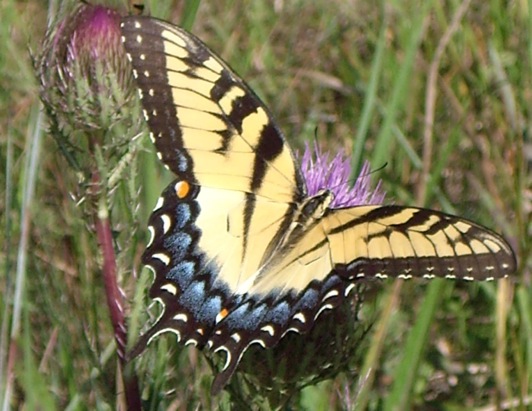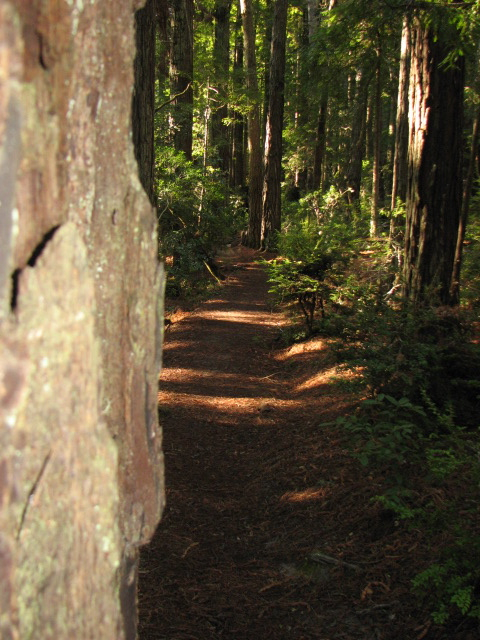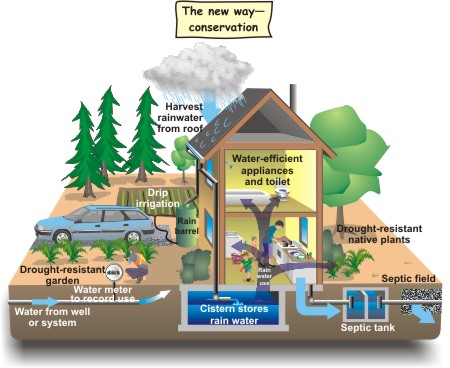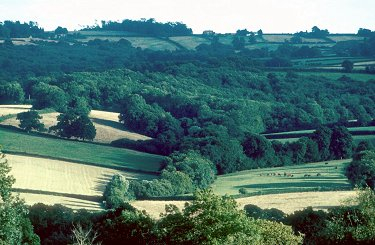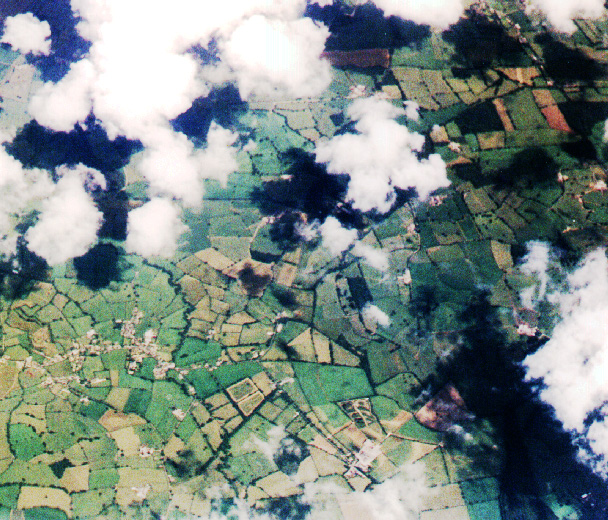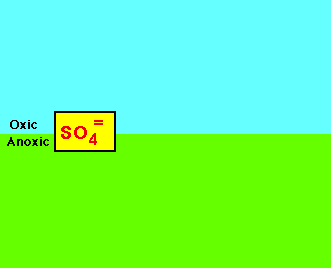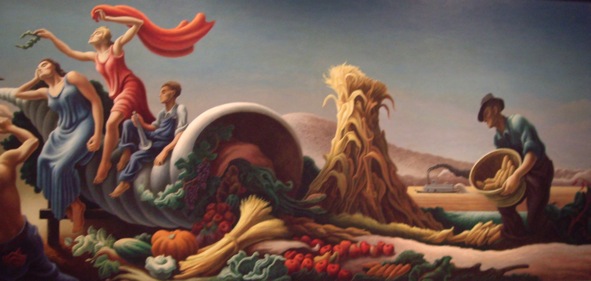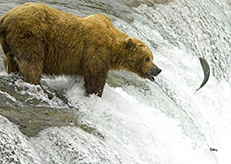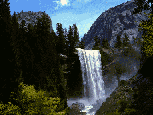 Basic
Concepts
Basic
ConceptsEcology
The binding ties | Define | Revolutions | Ecosystems | Laws | Diagram | Ecological problems | Home | Eco-biological system
![]()
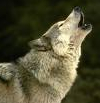 |
Ecology is a synthetic & systemic study of an organism or a species and its surroundings. The ecological system is a basic unit of study for measuring the impact of interdependent populations in a place and how they are influenced by the ecosystems in which they reside or visit for use and nourishment. | |
| An ecosystem represents the necessary preconditions for life to persist in a place. | ||
| About ecology | Natural assets | Energy |
| Ecological Society of America | ||
All ecosystems are divided in two related functional parts:
1. habitat – mineral & physicochemical parts – abiotic 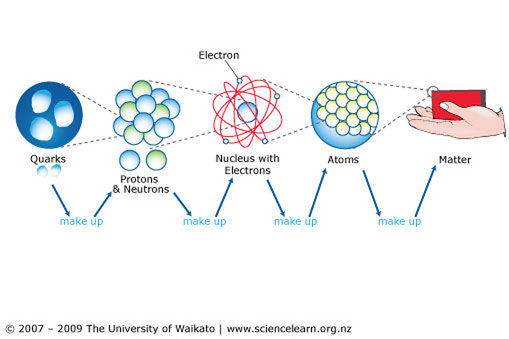
+
2. biotic community – organic vegetal – biotic 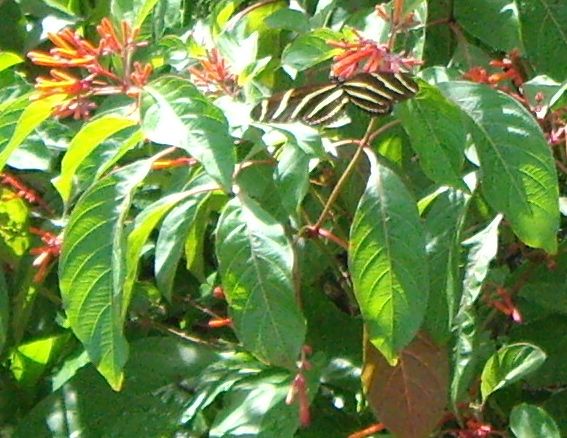
______________________________________
= partnership: meaning the parts work together.
The conceptual spheres of ecological impact.
Flowering plants and insects commensally coexist.
The binding ties | Define | Revolutions | Ecosystems | Laws | Diagram | Ecological problems | Home | Eco-biological system
This relationship described above must have synergy to work well.
The habitat exhibits environmental resistance while the biotic community manifests a biological potential and as these opposing qualities of natural systems operate their functions sustain populations and provide ecological values in the form of ecosystem services
Rules of Ecology imply a living and working together and that is called symbiosis and based on a synergy of interests.
Synergy implies that the whole -- or combined effect of two or more components -- is greater than the mere sum of the constituent parts–atmosphere, hydrosphere, & lithos-athenosphere below.Synergy in this context, means that the parts working together as a whole are more effective in
their survival and dispersal than if they operate in isolation.Synergy, literally means a combined activity where the actions of each actor is not antagonistic to the other.
Beneath the surface are integral spheres. 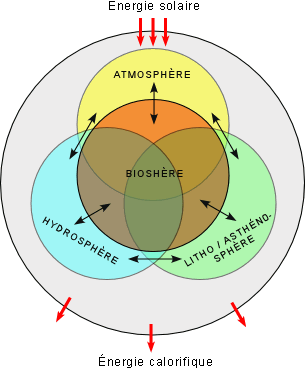
These inanimate or inorganic parts contribute to sustain the biological whole: the organic conditions of existence. The essential parts, schematically represented, of an ecological system.
The combined impact of each of these conceptually separate spheres, but collaterally related influences, by the rules of synergy have a combined impact on sustaining life greater than each of their separate contributing factors.
Trophic levels refer to food sources in an ecosystem arranged by the means used to acquire energy.
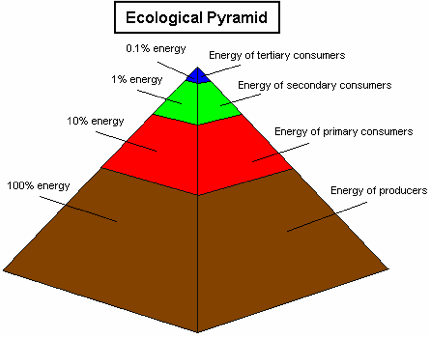
The binding ties | Define | Revolutions | Ecosystems | Laws | Diagram | Ecological problems | Home | Eco-biological system
Examples
of symbiotic relations:
- Lichen: these are literally two different organisms "living together" (symbiosis); one is a green algae and the other is a fungus. The synergy, or working together occurs because the waste minerals of the fungus is used by the green algae which takes sunlight and carbon dioxide to make oxygen that the fungus requires.
Corals: are also two creatures living, symbiotically, together. This is called mutualism because, like the lichen, one creature here is an animal polyp and the other is an algae. The algae lives within the polyp and provides oxygen to the animal polyp whose carbon dioxide waste is needed by the algae. Like so many deep water organisms the largely shallow water coral reefs formed by these symbiotic polyps are metabolically resemble the communities of life that live in the deep ocean around methane (cold) seeps or the sulphur rich (hot) vents called "smokers" associated with volcanoes. While the coral is an animal with an algae inside, deep water communities are animals with bacteria inside for the mutual benefit of both kinds of organisms.
- Mycorrhizae: are a classification of soil fungus living in relation to the roots of trees and other plants. Orchids and pine trees are associated with two functionally distinct root fungus. They are examples of mutually beneficial symbiotic creatures. "The presence of a fungal partner is vital for establishment and growth of seedling trees of a number of different species..." such as pines. In some cases the fungal partner spreads out underground for acres and nourishes the re-growth of forests, despite harsh circumstances that might otherwise (without the fungus) inhibit the persistence of new trees.
[ page 196, Dictionary of Biology, Abercrombie, Hickman & Johnson, (1980).]
![]()
The binding ties | Define | Revolutions | Ecosystems | Laws | Diagram | Ecological problems | Home | Eco-biological system
are crude models that attempt to examine how nature behaves.
Any place
may be thought of as having a biological and physical set of conditions, together they form an ecosystem.
![]()
The binding ties | Define | Revolutions | Ecosystems | Laws | Diagram | Ecological problems | Home | Eco-biological system
![]()
What is ecology?
1. ecology - is a study of living things and their relations
to the organic & inorganic conditions
of existence.
In both history & natural history, ecology is the study of how organisms depend on one another and their surroundings;
A synthetic science that analyzes crucial responses to changes in the environment.
Derived from the Greek words for household (eco) and rationale (logos); meaning an understanding of the "household of life."
The household of life woodland scarcity prairie style ecological view half-timbered home Robie House by Frank Lloyd Wright medieval modern What a household, energy-wise, actually does.
Just as all houses shed water from their roof, so they absorb or emit radiant energy or heat and thus "breathe."
Conservation begins at home.
The binding ties | Define | Revolutions | Ecosystems | Laws | Diagram | Ecological problems | Home | Eco-biological system
![]()
![]()
When ecology is applied to history the biological patterns emerge that link humans to their surroundings.
1.1 ecology is related to how we utilize (use) nature:
1.12 Four approaches to nature (in western civilization)
1. spiritual - based on a transcendent, sacred, and religious views
2. aesthetic - based on an appeal to our senses, emotions and fashions
3. utilitarian - based on our need to eat, re hydrate, and sleep to survive
4. ecological - based on the facts that we are parts of a functional system1.2 Two policy approaches to resources:
Conservation vs. preservation, see [ Siry, p. 7 ] for differences
1.3 Historical Ecology and ecology in the past
1.3.1. Natural history [ Greek & Roman construct ]:
Geographical centers of specific animal and plant associations we now call cultural hearths are dependent on the ecological integrity of the resident bacteria, fungi, plants, & animals.
Life's physical evolution and endurance was originally seen as a divine manifestation.
Geology, botany, zoology, geography and ethnography were to the ancient Greek naturalists different puzzle pieces of this cosmogonic framework.
1.3.2. History is a Chinese construct of chronicling the past.
It
was done to record the events associated with the heavens in each dynasty.
Dynastic historians were interpreters of official policy, ideas, behavior, and actions.
The
binding ties
| Define | Revolutions
| Ecosystems | Laws
| Diagram
| Ecological problems
| Home | Eco-biological
system
Ecological problems, three facets to | Ecological problem solving & forests
2. Ecological revolutions - discernible changes in land-use,
technology, population and beliefs.
"I have
had occasion both to observe and to feel the effects resulting
from
an injudicious system of managing woodlands and
the products of the forest."
George Perkins Marsh, (1864)
| Kiva | Urban Los Angeles |
 |
|
| Native American farmers | Post industrial suburban sprawl |
The binding ties | Define | Revolutions | Ecosystems | Laws | Diagram | Ecological problems | Home | Eco-biological system
![]()
- By -
Joseph Siry
![]()
"All flesh is grass."

"We are what we eat."
Two phrases suggest that we ultimately become what we consume. How startling that what we consume ultimately consumes us, but in an ecological sense, no other conclusion is possible because one organism depends on another. It is often easy to ignore the realization that what we eat on a daily basis actually shapes the land-use patterns around the world. Consider for example the impact of an American or European breakfast on the conversion of land and water resources.
| item | agrarian land pattern | geographical area |
| coffee | tropical tree plantations | South America, Indonesia, & Africa. |
| orange juice | orchards | Florida, Brazil, Israel, India, & China. |
| bananas | tree plantations | Mexico, Central America. |
| sugar | tropical sugar cane fields | Florida, Hawaii, Jamaica, Costa Rica, India. |
| eggs | chicken farms | Arkansas, Georgia, California, Illinois. |
| milk | dairy farms, cattle | Florida, Texas, California, Wisconsin, New York. |
| bacon | pig farms | North Carolina, Georgia, Alabama, Iowa, Indiana, Illinois. |
![]()
The binding ties | Define | Revolutions | Ecosystems | Laws | Diagram | Ecological problems | Home | Eco-biological system
![]()
When considering 310 million people have eating habits in the United States that influence the use of land and water resources in other countries, it is not surprising that whatever it takes to grow, harvest, deliver and prepare the food will be of essential importance to social cohesion, comity, and progress. Food in Europe and America involves the use of land, water and fossil fuels.
Estimates by Dr. Pimentel at Cornell University reveal that for every calorie we extract from a food sources ten calories of fossil fuels are required to obtain the nourishment.
With that in mind, compare the number of people needing the land that the food is produced on and it is easy to recognize how vast the dependence is on the top soil, rain and nutrients that nourish the foods that feed the world. This is an ecological approach to describing human social interdependence.
| Nation | population | arable land; hectares / capita |
%
urban |
income |
| USA |
272.5 |
0.70 |
75 |
$29,080 |
| Canada |
30.6 |
1.70 |
77 |
$19,640 |
| Europe |
728 |
0.27 |
73 |
$13,890 |
|
sum |
1031.1 |
1 |
75 |
$17,000 |
The numbers above based the latest data are 1990 figures.
![]()
The binding ties | Define | Revolutions | Ecosystems | Laws | Diagram | Ecological problems | Home | Eco-biological system
![]()
It
must be recalled that agricultural ecosystems are
the functional basis of all human societies, except for the hunting and
gathering peoples. But even among some, so called nomads, an intimate
relationship among land, wildlife and deliberate alteration of vegetation
sustains these groups of people.
* 61 million Americans live in the rural ( 2,500 or < population ) places
* farm workers experience the worst housing and poverty conditions in the US
* indoor plumbing is the "benchmark" of substandard transition to standard housing
Agriculture is the landscape to food connection maintaining people's health and security.
17% of all commercial energy used in the USA is for agriculture & accounts for 25% of the food and fiber produced worldwide, feeding 105 Americans stateside and 35 residents overseas. 1.8% or 650,000 Americans are full time farmers!
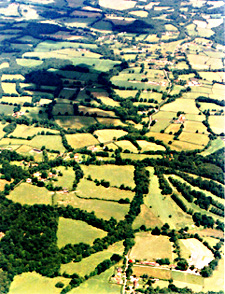 41%
of the water pumped in the US is for irrigation of crops (70-80% evaporates).
41%
of the water pumped in the US is for irrigation of crops (70-80% evaporates).
26 billion tons of topsoil erodes annually (over four tons/ capita annually).
1/3 of all cropland globally is becoming too eroded and 1/10 is waterlogged from irrigation, 1/4 is highly saline from irrigation.
[.33 + .25 + .1 = .59 or 59% of cropland is damaged!]
14% of US topsoil loss is from overgrazing of livestock. 1/2 our water
goes to livestock.
17% of the planet’s arable (crop) land is irrigated and producing
40% of the world’s food.
70% of US grain is fed to livestock; compared to 37% worldwide.
19% of US cropland is devoted to livestock while 50% is globally.
11% of the planet’s surface is now used and able to grow crops (arable). (24% could be used, allegedly)
"As for diversity, what remains of our native fauna and flora remains only because agriculture has not got around to destroying it. The present ideal of agriculture is clean farming; clean farming means a food chain aimed solely at economic profit and purged of all non-conforming links. . . . Diversity on the other hand, means a food chain aimed to harmonize the wild and the tame in the joint interest of stability, productivity, and beauty.
Clean farming, to be sure aspires to rebuild the soil, but it employs to this end only imported plants, animals and fertilizers. It sees no need for the native flora and fauna that built the soil in the first place. . . . the tacit evidence of evolution, in which diversity and stability are so closely entwined as to seem two names for one fact."
Aldo Leopold, The Round River, pp. 164-165.
The binding ties | Define | Revolutions | Ecosystems | Laws | Diagram | Ecological problems | Home | Eco-biological system
Agro-ecology is the study of the life support system
of subsistence farming.
observation and testing are essential procedures
mimesis, imitate the seasons and natural processes
soil conservation emerged in 18th century through understanding natural cycles of depletion and nourishment of soils by crops and pasturage.
The binding ties | Define | Revolutions | Ecosystems | Laws | Diagram | Ecological problems | Home | Eco-biological system
![]()
|
Nitrogen |
Sulfur |
.... |
|
|
fast
( N, P, K, O) |
slow
( N, Mg, Ca, S, C) |
|
deplete
quickly <---- |
---->
hard to obtain |
 C
C
or Carbon
is actually a variable cycle, the residence time for carbon
dioxide in the air can be around for over a century.
Carbon dioxide is delicately balanced in the atmosphere, too little of it and the earth cools to its resting state near zero degrees and too much and the air can heat up well beyond historical levels.
![]()
The binding ties | Define | Revolutions | Ecosystems | Laws | Diagram | Ecological problems | Home | Eco-biological system
![]()
the
lessons from the land:
caretakers
of the earth
work
with nature; limits determined by terrain, energy, slope & sun angles.
biological
potential may be expanded --within
limits-- through careful work
Cherish the earth or perish;
Nourish the land and flourish.
The "cornucopia", from Thomas Hart Benton's Achelous & Hercules, 1947: American Artist; Smithsonian.
The binding ties | Define | Revolutions | Ecosystems | Laws | Diagram | Ecological problems | Home | Eco-biological system
![]()

The Kaibab Plateau, Marble Canyon & the south rim of the Grand Canyon. JVS, 2003.
Ecological elements contribute to the functionality and resilience of whole systems. It is each of these functional elements, working together that provide the human economy with ecosystem services, such as a watershed. Landscape that is forested allows water to percolate deep into underground sources and runoff more slowly across the terrain to provide a less drastic flow of flood water into adjoining rivers. Any watershed is the source of drinking water supplies to urban and rural areas. The Kaibab plateau shown above on the north rim of the Grand Canyon was the site of an ecological disaster involving wildlife and a lesson in game management for the consequences involved when the removal of predators –in this case eradication of wolves– led to an overpopulation of deer destroying the forest on the plateau. The forest as a source of groundwater is part of a vast circuit of ecological dependencies the consequences of which are often only learned after the disturbance occurs.
As Aldo Leopold wrote: "We do not understand or foresee these readjustments; we are unconscious of them unless the end effect is bad."
Round River, p. 163.
The binding ties | Define | Revolutions | Ecosystems | Laws | Diagram | Ecological problems | Home | Eco-biological system
Tree ring analysis reveals past climates
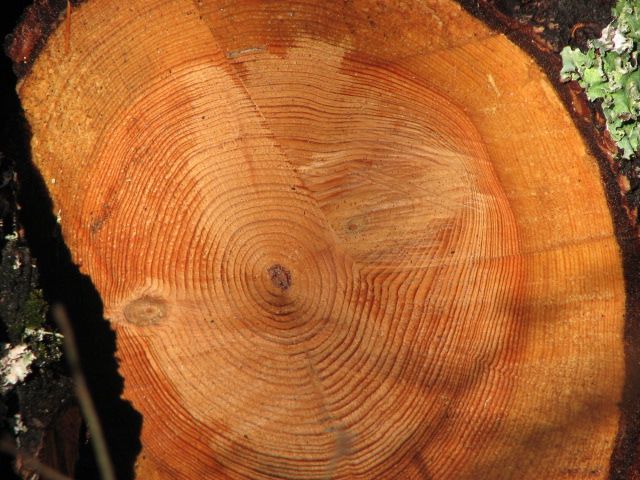
Above is a set of tree rings. The width of the rings relative to one another indicate the amount of growth that year. The implication is there was sufficient water and nutrients available for growth to persist. Narrower rings suggest droughts.
Metaphorically:
The concentric circles have fractured in the direction of and contrary to the circularity of the rings. They can be thought of a a schematic or diagram of an interlocking ecological system because that suggests how interdependent one part of the tree is on another and how each part is upon the whole.
Systemic thinking relies on bounded rationality This type of problem solving is required to determine how precisely each piece of the ecosystem relies on the other parts to function properly.
The role of water in ecological systems.
The binding ties | Define | Revolutions | Ecosystems | Laws | Diagram | Ecological problems | Home | Eco-biological system
![]()
Water is the engine of life.
 Three
laws of Ecology
Three
laws of Ecology
- Everything has to go somewhere. So there is no away to throw to!
- You can never merely do one thing. So every action has an equal and opposite reaction!
- There is
a paradox about free lunches:
The rule is that you can never get something for nothing, and thus, "there is no such thing as a free lunch;" yet, our earth in this universe may be the ultimate free lunch!
![]()
The binding ties | Define | Revolutions | Ecosystems | Laws | Diagram | Ecological problems | Home | Eco-biological system
![]()
-
Ecology
(defined)
The binding ties | Define | Revolutions | Ecosystems | Laws | Diagram | Ecological problems | Home | Eco-biological system

![]()
- agriculture
- binding ties (link us all together)
- cycles
- defining ecology
- dynamic qualities
- ecological elements in historic and systemic relation
- farming and land-use consequences of consumption
- revolutions
- stewardship
- symbiosis
- technology and energy use
- water and the three laws of ecology
![]()
"Hercules and Achelous," 1947, by Thomas Hart Benton [ Born: Neosho, Missouri 1889 | Died: Kansas City, Missouri 1975 ] tempera and oil on canvas mounted on plywood [62 7/8 x 264 1/8 in. (159.6 x 671.0 cm.) Smithsonian American Art Museum] Gift of Allied Stores Corporation, and museum purchase through the Smithsonian Institution Collections Acquisition Program, 1985.– Smithsonian American Art Museum
The
binding ties
| Define | Revolutions
| Ecosystems | Laws | Diagram
| Ecological problems
| Home | Eco-biological
system
![]() Please send your questions
or comments to Joseph Siry
Please send your questions
or comments to Joseph Siry

